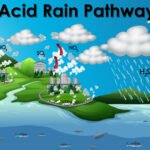Introduction: A Fiery Force Beneath Our Feet?
Could the heat from the Sun be fueling earthquakes on Earth? We often associate seismic activity with tectonic movements, but scientists now claim that the Sun might play a more significant role than we ever imagined.
From influencing Earth’s atmosphere to impacting ocean currents, the Sun’s power extends far beyond providing light and warmth. But could its energy be powerful enough to shake the very ground beneath our feet? This intriguing theory has sent shockwaves (literally!) through the scientific community.
In this article, we dive into the latest research exploring the connection between heat from the Sun and seismic activity, uncovering how solar cycles, geomagnetic storms, and thermal expansion might be influencing earthquakes in ways we never considered.
The Surprising Role of the Sun in Earthquakes
For decades, earthquakes have been linked primarily to tectonic plate movements caused by internal forces within the Earth. However, recent studies suggest that external influences—particularly heat from the Sun—may also trigger seismic activity.
Scientists argue that solar radiation and intense geomagnetic storms could affect Earth’s crust and tectonic stress in previously underestimated ways. While this doesn’t mean the Sun directly causes earthquakes, it might contribute to the timing and intensity of seismic events.
Solar Activity and Its Impact on Earth’s Crust
The Sun follows an 11-year solar cycle, during which its activity fluctuates, leading to varying solar radiation levels, sunspots, and geomagnetic storms. Here’s how these factors might influence seismic activity:
- Thermal Expansion & Contraction
- The Earth’s crust expands and contracts due to varying solar heat levels. This continuous shift can place additional stress on fault lines, increasing the likelihood of an earthquake.
- Geomagnetic Storms & Their Effects
- Solar flares release massive bursts of electromagnetic energy, which can disrupt Earth’s magnetosphere. Some scientists theorize that these disruptions may cause slight variations in tectonic stress, potentially leading to earthquakes.
- Ionization of the Atmosphere
- Intense solar radiation ionizes the upper layers of the Earth’s atmosphere, potentially influencing tectonic plate movements through electromagnetic interactions.

Historical Evidence: Correlations Between Solar Activity & Earthquakes
Scientists have been analyzing historical data to determine whether there is a consistent link between heat from the Sun and earthquakes. Some fascinating patterns have emerged:
| Year | Major Earthquake | Solar Activity |
|---|---|---|
| 1859 | Great Carrington Event | Extreme solar storm occurred around the same time |
| 2004 | Indian Ocean Tsunami | Solar activity peaked that year |
| 2011 | Japan’s 9.1 Earthquake | Coincided with a solar maximum phase |
While correlation doesn’t necessarily mean causation, these instances raise intriguing questions. Could solar activity contribute to these seismic events?
The Science Behind It: Can Solar Heat Really Trigger Earthquakes?
Though the connection between heat from the Sun and earthquakes is still under research, here are some plausible explanations:
✅ Thermal Stress on Fault Lines: Sudden temperature shifts due to solar radiation might subtly weaken fault zones, making them more susceptible to slipping.
✅ Magnetosphere Disruptions: Solar storms may trigger geomagnetic disturbances, which could subtly influence tectonic movements.
✅ Gravitational Interactions: Some researchers believe solar activity and lunar gravitational forces might create stress patterns deep within the Earth.
While more research is needed, the idea that external forces, like the Sun, play a role in earthquake dynamics is gaining traction.
Can the Sun Help Predict Earthquakes?
One of the biggest challenges in earthquake science is prediction. If scientists can establish a concrete link between heat from the Sun and seismic activity, it could revolutionize earthquake forecasting.
Here’s how:
🔹 Monitoring Solar Cycles – Tracking solar activity could provide clues about potential earthquake-prone periods.
🔹 Early Warning Systems – If solar flares and geomagnetic storms influence earthquakes, real-time space weather monitoring could serve as an early warning mechanism.
🔹 Advanced AI Models – Machine learning algorithms could analyze past solar and seismic data to detect patterns that might indicate future earthquakes.
While this is still an emerging field of research, the potential benefits of incorporating solar activity into earthquake prediction models are significant.
Debunking the Myths: Is This Just a Coincidence?
Skeptics argue that while there may be a correlation between heat from the Sun and earthquakes, there is no definitive proof of causation. Some points they raise include:
🔸 Internal forces, not external ones, primarily drive tectonic activity.
🔸 Historical patterns could be coincidental rather than causally linked.
🔸 More rigorous studies are needed to establish a direct scientific relationship.
However, the growing body of research suggests that we shouldn’t outright dismiss the Sun’s potential influence. The more we learn, the better equipped we are to understand Earth’s complex systems.
Final Thoughts: The Sun’s Influence on Our Shaking Planet
The idea that heat from the Sun could contribute to earthquakes is fascinating and controversial. While we know that the Sun profoundly impacts our planet’s climate, ocean currents, and atmosphere, its role in seismic activity remains an exciting area of exploration.
If ongoing research continues to uncover links between solar activity and earthquakes, we may one day use space weather forecasts as a tool for earthquake prediction—something that could potentially save thousands of lives.
So, could the next big earthquake be influenced by the Sun? The answer is still unfolding, but one thing is certain: the universe continues to surprise us!
Key Takeaways
✅ Heat from the Sun might subtly influence earthquake timing and intensity.
✅ Solar cycles, geomagnetic storms, and thermal expansion could affect tectonic stress.
✅ Historical data shows potential correlations between solar activity and seismic events.
✅ Understanding this link could improve earthquake forecasting.
✅ More research is needed to establish a definitive cause-and-effect relationship.
What are your thoughts on this theory? Could the Sun be a hidden factor in earthquake triggers? Share your opinions in the comments! 📧
1. Can the Sun directly cause earthquakes?
No, but solar activity may influence Earth’s tectonic stress levels, potentially contributing to earthquake triggers.
2. Is there strong evidence supporting this theory?
While studies suggest a correlation, more research is needed to confirm a direct causal link.
3. Can monitoring the Sun help predict earthquakes?
Possibly. Solar data could be used in earthquake forecasting models if a strong connection is found.
4. What’s the biggest challenge in proving this theory?
Earthquake science is complex, and multiple factors influence seismic activity, making it difficult to isolate solar influences.





